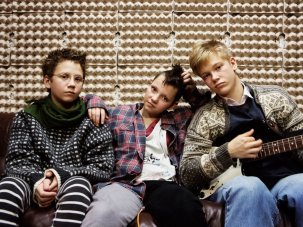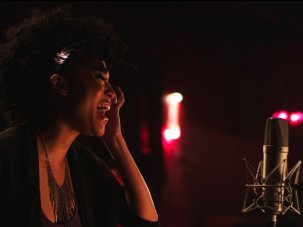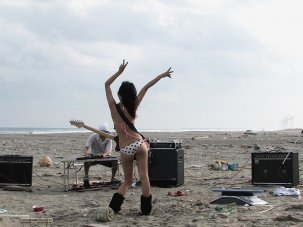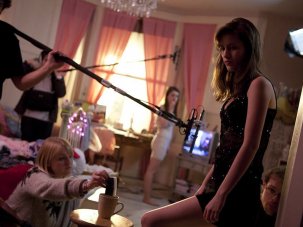from our June 20114 issue
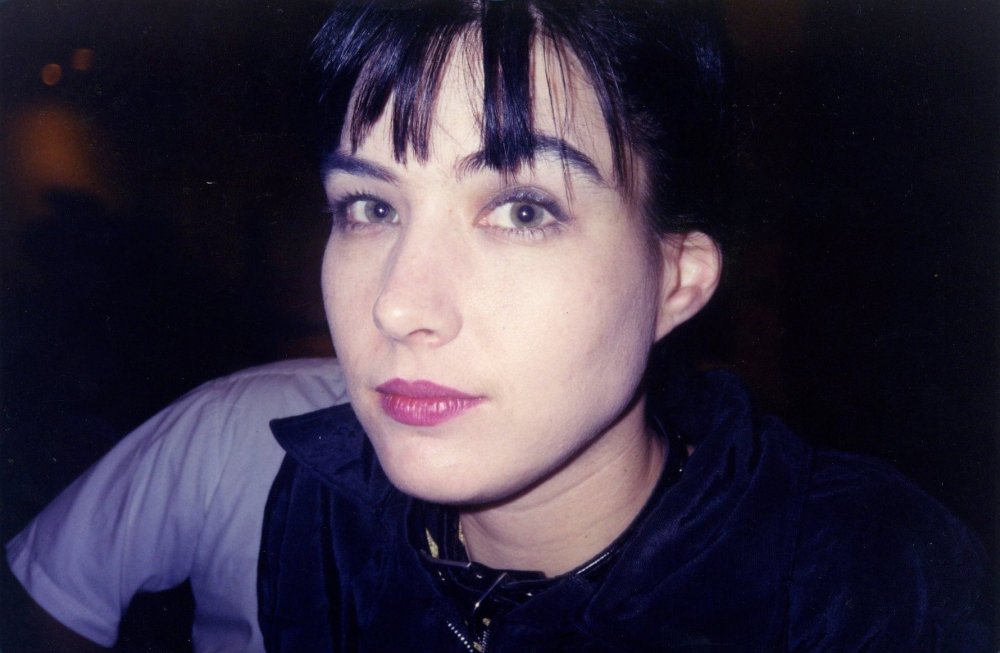
The Punk Singer (2014)
“Girls to the front!” Kathleen Hanna’s impassioned scream from the small stage of a punk venue sometime in the early 1990s sums up both the riot grrrl movement of which Hanna was a founding figure and Sini Anderson’s playful and powerful documentary. Looking back at how a vital movement came into being when Time magazine was declaring feminism dead (courtesy of Ally McBeal), the film also opens up the present moment, in which heroes of punk adolescence such as Kim Gordon, Joan Jett and Hanna herself are cultural elders examining their role as leaders and its attendant pressures.
Director Sini Anderson
USA 2013
Certificate 15 81m 21s
In Colour
[1.78:1]
Distributor Dogwoof
UK release date 23 May 2014 in cinemas and to download
dogwoof.com/thepunksinger
► Trailer
Media coverage of riot grrrl, the punk-rock feminist movement that emerged in the 1990s in northwest America, tended to the sensationalist and prurient, declaring, for example, that Hanna had been raped by her father – an accusation she unpacks, painfully, for the camera.
Inspired by riot grrrl’s punk-inspired zine culture, Anderson adopts a number of its strategies: the interweaving of the personal and political, and a commitment to raw honesty that also deals with, as Hanna says, “this certain assumption: when a man tells the truth, it’s the truth; as a woman, there’s always a negotiation, an assumption I’m exaggerating.” Hanna’s sharp turn of phrase and deprecating intelligence is on show throughout, whether in the lyrics of her 38 songs on the soundtrack, or when describing the dead silence at the 1999 MTV music awards, after Adam Horovitz of the Beastie Boys, Hanna’s partner, has called out the industry for fostering rape culture, as “beyond ‘who farted?’”
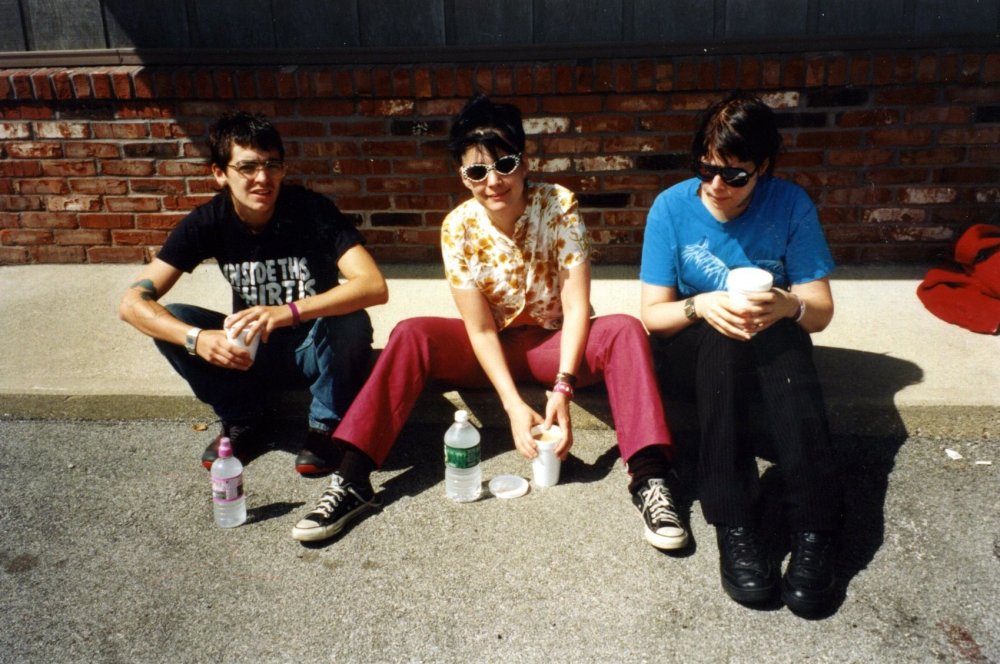
The Punk Singer (2014)
Anderson’s second strategy for celebrating Hanna’s work in the manner in which it was made includes an innovative piecing together of different performances of a given song to create a through-sung music video, starting with the anthemic ‘Rebel Girl’. While the film is roughly linear, using a chronological structure to show the development of Hanna’s work, these montages create an appealing atmosphere of creatively chaotic continuity. As a whole, the film is edited like a zine, collaging together the wealth of textual, photographic and video documentation produced by the small DIY feminist zine scene for which self-documentation was a survival strategy.
In 1994, while fronting her first band Bikini Kill, Hanna called for a media blackout – a risky strategy – but this is balanced by the buoyant fan culture that provides archival material for Anderson’s film, including two documentaries from the moment: Abby Moser’s Grrrl Love and Revolution: Riot Grrrl NYC (2011) and Tamra Davis’s short No Alternative Girls (1994). This, along with interviews with scene participants such as Lynnee Breedlove and cultural historians such as Sara Marcus, again creates a welcome sense of continuity and community.
While the film does not directly address the debates that fragmented the riot grrrl movement and mired Hanna’s later band Le Tigre (about racism and transphobia, respectively), it explores them obliquely through positive inclusion. Feminist activist Jennifer Baumgardner locates the origin of each of American feminism’s first three waves in solidarity with emancipation, then civil rights, and finally in response to ‘Becoming the Third Wave’, an article in Ms. in 1992 by the writer Rebecca Walker; while Breedlove, the former lead singer of riot grrrl band Tribe 8 who has transitioned, speaks through his presence for a riot grrrl/trans alliance.
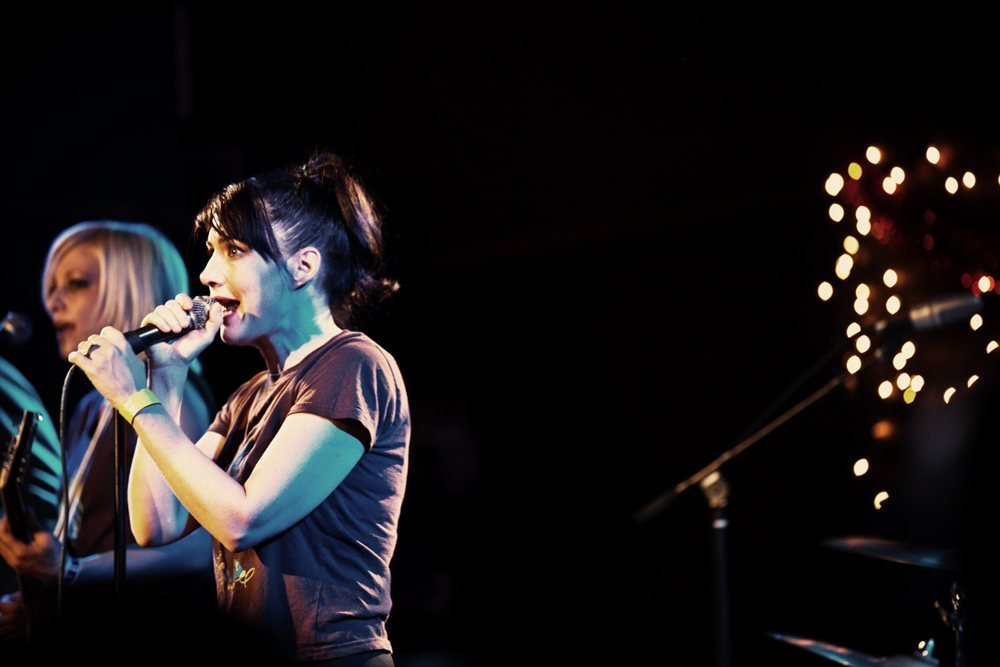
The Punk Singer (2014)
Funded by a Kickstarter project, The Punk Singer has the feel of a grassroots community project, emerging from the urgent question, “Where is Kathleen Hanna when we need her?” It’s a supreme irony that Hanna, who wrote ‘They Want Us to Make a Symphony out of the Sound of Women Swallowing their Own Tongues’ with Le Tigre, was unable to speak at a Planned Parenthood rally after being struck down by Lyme disease.
But as a video shot by Horovitz makes clear, Hanna has recently combined disability activism with feminist activism, using the film to create awareness of the disease, now epidemic in the US. “As a woman,” she sang in Bikini Kill, “I was taught to be hungry.” And Anderson’s film – a scrappy, exuberant battler like its subject – shows how Hanna has transmuted a hunger borne of body-image pressure into a hunger to change the world.




